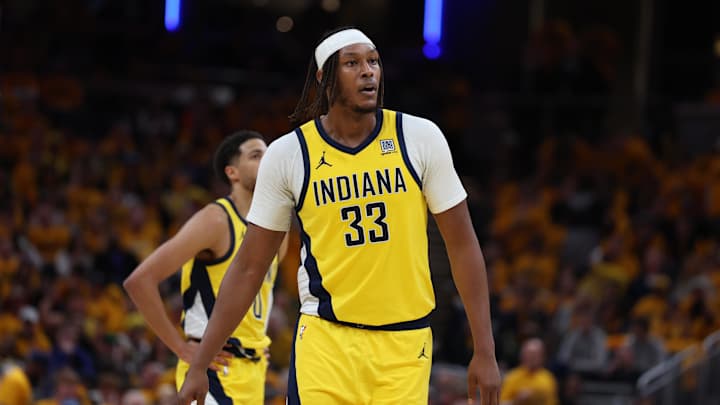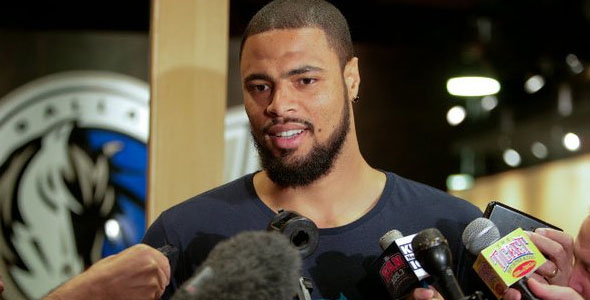
Date: July 3, 2025
The Milwaukee Bucks have made one of the most dramatic roster moves of the 2025 NBA offseason: signing free?agent center Myles Turner, formerly of the Indiana Pacers, to a four?year, $107 million deal. The move required the team to waive and stretch the contract of Damian Lillard to create the necessary cap space. Here’s a breakdown of the agreement, what it means for Milwaukee’s present and future, and expert commentary on whether this helps—or hurts—their championship hopes.
Contract Details
- Term: 4 years, $107 million.
- Player Option: In the fourth year (2028?29).
- Trade Kicker: Full 15% included.
- Annual Average Salary: Roughly $26.75 million per season.
This is the highest?paying contract Turner has ever signed. He will be 29 at the start of the deal, giving Milwaukee prime years of rim protection, spacing, and experience next to Giannis Antetokounmpo (and some lego mastery). The player option plus trade kicker give Turner flexibility late in the deal while offering Milwaukee some maneuverability.
To clear cap space, the Bucks utilized the NBA’s “stretch provision” to waive Damian Lillard—whose remaining $113 million salary will now be spread over five seasons at roughly $22.5 million per year. That move, combined with waiving or trading other contracts (like Pat Connaughton and Chris Livingston), allowed them to land Turner outright rather than via trade. Source
Why the Bucks Made This Move
1. Reinforce the Front Court
Turner brings elite rim protection—he led the league in total blocks in 2019 and 2021, and averaged two blocks per game last season. His ability to guard the paint and anchor the defense addresses a weakness the Bucks had at center once Brook Lopez departed.
2. Floor Spacing with a Big
Unlike a traditional bruiser at center, Turner can hit threes—he launched 756 three-pointers over his Pacers career. His shooting ability gives spacing for Giannis to operate in the post, creating driving lanes and corner threes.
3. Signal to Giannis
The move is widely seen as a message to Giannis Antetokounmpo: the front office is still willing to spend aggressively to support him. In prior offseasons, moves like Jrue Holiday (2020) and Damian Lillard (2023) helped keep Giannis happy. This is the latest example.
4. Exploiting Indiana’s Reluctance
Indiana reportedly offered Turner a three?year, $66 million deal without a player option—well shy of Turner’s expectations. With Tyrese Haliburton likely out next season recovering from injury, Pacers management balked at exceeding the luxury tax into a rebuild. Milwaukee capitalized.
What Turner Adds to the Bucks
Defensive Anchor
Turner’s shot blocking and interior presence create a more intimidating paint defense. Paired with Giannis—who can switch and manage PnRs—Milwaukee may have one of the league’s top defensive frontcourts again.
Offensive Versatility
Turner can stretch the floor, shoot corner threes, and set strong screens. His scoring averages (about 15.6 points, 6.5 rebounds, and 2 blocks last season) make him more than a defensive specialist.
Veteran Leadership
After ten seasons in Indiana, Turner arrives with playoff and Finals experience—he was key to the Pacers’ run to the 2025 NBA Finals. His maturity should blend well with Milwaukee’s veteran core and provide stability in tight playoff series.
Risks and Open Questions
Financial Burden
This was an expensive move. When combining Turner’s $26–27 million with Lillard’s stretched $22.5 million, Milwaukee is paying about $50 million annually toward just one roster spot. Critics say the move ties up too much cap space.
Backcourt Void
In clearing space, Milwaukee cut ties with Lillard. That leaves them thin at point guard—Kevin Porter Jr., Gary Trent Jr., Jamaree Bouyea and rookie Mark Sears are likely options heading into training camp. Without a reliable high-usage backcourt scoring option, offensive balance remains a concern.
Giannis Tensions
Reports emerged that Giannis was displeased at losing Lillard. Although he reportedly welcomed Turner as a teammate, internal dynamics could remain fragile if the team struggles.
Is This Enough?
Analysts warn that adding Turner is only a start. Without upgrades at small forward or point guard, the Bucks still lack a complete supporting cast. They’re relying heavily on Giannis and now Turner to carry the postseason load.
How It All Fits Strategically
Milwaukee has made a statement. They chose front?office creativity—using stretching provisions, trades, and exceptions—to outright sign Myles Turner without giving up future draft assets. This aggressive posture aims to extend Milwaukee’s championship window around Giannis. What remains to be seen is whether the interior-centric move compensates for the loss of high-end guard play.
Outlook for the 2025–26 Season
If Turner integrates well, the Bucks could emerge as a top 3–4 seed in the Eastern Conference. Their defense should rise, roster ceiling improves, and there’s hope Giannis stays longer. But if the perimeter offense falters, the ceiling may remain capped—and the financial flexibility limited.
The key will be finding reliable scoring from backcourt additions like Kevin Porter Jr., Gary Trent Jr., or others—possibly in future trades or mid-season moves.
Conclusion
The signing of Myles Turner marks one of Milwaukee’s boldest offseason gambles. The four?year, $107 million deal delivers elite rim protection, spacing, and playoff poise. Yet at what cost? The loss of Damian Lillard, cap strain, and limited perimeter options raise real questions.
Still, pairing Turner with Giannis gives Milwaukee an imposing two?man frontcourt presence. It’s no guarantee of a title, but it’s a clear signal: the Bucks are doubling down. Whether the gamble pays off depends on depth, health, and whether Turner can elevate both ends of the floor in a franchise hungry for another championship.
For more on the Turner contract and the Bucks strategy, see the official NBA.com report on the deal here.



















